Review for Lone Wolf and Cub - The Criterion Collection
This is the second time I’ve watched the ‘Lone Wolf and Cub’ series, pretty much back to back, in their entirety; though the first time on Blu-Ray. I have to say that I enjoyed it immensely.
Based on a well-known Manga (which I have partially read), it’s quite a series. It features a much-feared and admired ex-executioner of the Shogun, Itto Ogami (Tomisaburo Wakayama); a seemingly indestructible, unbeatable master of ancient martial arts who is able to take on and defeat whole armies single-handedly, despite his large frame. He’s an imposing figure; tall, large, almost erring on chubby and not at all the classic, Bruce Lee style fighter. When a local clan (the Yagyu’s) double-cross him to gain favour with the Shogun and to advance their own status, his wife is murdered in the attack. He resolves to travel the land with his infant son (Daigoro, played by Akihiro Tomikawa) in tow, making a living as a righteous assassin, whilst also avenging the murder of his wife.
Cue lots of violent action, mammoth body-counts, fountains of blood (almost literally) and occasional gratuitous sex and nudity. It was a potent and popular format which over the two years of its production (1972-74) proved to be a big success.
The films opt for almost super-real reflections of the manga and are a faithful adaptation of that – often brightly coloured and hugely stylish, with tons of hyper-real action that takes a massive suspension of disbelief to enjoy, much like the comics.
Although they are unarguably violent, the blood is bright red and unrealistic, seemingly pouring out like red water from a hose, which in truth is what it probably was. As Otto takes on tens of men, there are countless moments where you feel that, despite the clever fight choreography, that he could have been slain ten times over by anyone with their wits about them. But that is all as forgivable as seeing Bruce Lee fight an island full of men in ‘Enter the Dragon’. Even guns and grenades can’t stop him. And that’s what make these films so much fun to watch.
The fact that Itto wheels around an infant is almost surreal, a bit like that chap who went around Ireland with a fridge. Yet it is this curious twist that lends the film compassion and human interest and the superb, straight-faced seriousness of the infant simply adds to the films’ mystique and power. During the first two films the James Bond like devices within the wooden pram / cart are consigned to merely knives that spring from its wheels, but by the third film it becomes a shield against bullets and canon fire-power as well as packing large canons of its own. But by the time you get to the third film, you’ve given up worrying about how realistic or tenable it is – it’s just fantastic fun.
They are films of their day and have a weird, self-serving, warped view of women where even a near rape is deemed acceptable under the right circumstances. Whilst such a notion is quite repugnant and offensive to modern sensibilities, these were less informed times, certainly in Japan and, despite this, the hero seems to have a deep emotional respect for women. I won’t (can’t) defend that here, but in the context of the films you might get a sense of what I mean. Suffice it to say that, before you press ahead, you have been warned. These films are a lot of fun, but politically correct, they’re not.
Wakayama, who plays Ogami Itto, was a well-known actor of the time, being the older brother of Shintaro Katsu who starred in more than twenty Zaitoichi films and a long-running TV series of the same. To begin with, he seems an unlikely hero, but as the film’s progress, his vast, often silent presence is very effective and he plays it with a huge amount of personal charisma, making him a great choice for the role.
The story goes that the US was first introduced to the series almost a decade after their home release, in 1980, in a compilation film entitles ‘Shogun Assassin’ which cobbled together the best bits of the first two films which, in truth, were pretty similar in every regard. They were cursed with a pretty awful US dub track and the final four films were also released shortly thereafter, often brutally cut to get past the censors and also featuring a pretty shoddy dub. This new, deluxe set from Criterion puts that all in the past and presents all original films as well as Shogun Assassin (the compilation) and lots of bonus material too.
So on to the films themselves. Each has huge amount in common with each other and they were shot back to back, pretty much, over a two-year period, so although they are features in every sense of the word, you get the sense that you are watching a pretty classy TV series – or at least, I did. They can, of course, be watched individually but make much more sense if you have watched the first film before any of the others. After that, it doesn’t really make much difference, though I guess no reason not to watch them in the order of their release.
Sword of Vengeance (1972)
The film that started it all sees our hero, Ogami Itto, wandering the shogun and warlord ruled vistas of 18th Century Japan, with his ‘baby’ in tow – the unlikeliest of heroes, but absolutely the deadliest. In a political coup to further their own standing with the shogun, the Yagyu clan falsely accuse Itto, the shogun’s executioner, of treason and attack his home, killing his wife. He decides to take the ‘path to hell’ with his son, Daigoro, at his side throughout as he journeys to wreak revenge and bring down the entire Yagyu clan. Funding his existence through righteous commissioned assassins, his first mission sees him slaying a good Chamberlain’s rival who is hiding at a village near some hot springs. Using just his trusty battle sword, a staff (replete with knives at each end on some occasions, like flick-knives), he seems to be able to take on any number of foes and win. Blood flows thick and fast throughout this incredible, action packed first instalment and the scene is set for this bloody road-trio to continue.
Baby Cart at the River Styx (1972)
The journey continues with Itto and son and this time they are contracted by a clan whose business secrets, which have kept them in comfort for decades, are threatened by a rival. This time he is challenged by a highly-trained and ‘undefeatable’ group of ruthless female assassins. They realise that the only way to get to Itto is to kidnap his son, which they succeed in doing. What plays out as Itto not only fulfils his contract, but rescues his son, is nothing less than high octane thrills that takes the film up a gear from the first. It’s an incredible film and it’s somewhat telling that when ‘Shogun Assassin’ was cut from the first two films that a mere 12 minutes was used from the first – just enough to set up the story to then unleash this incredible blood-fest.
Baby Cart to Hades (1972)
Things take a somewhat darker path in ‘Hades’ which sees Itto protect, not only his son, but a very young prostitute called Omatsu, who has been kidnapped into sexual slavery and is being groomed by an older man. When he tries to rape her, she bits off his tongue and he dies – making her a murderer in the eyes of the clan who control her. Itto steps into protect her and agrees that, if the gang set her free, he will undergo her punishment for her. This is he does with great self-control, subjecting himself to tortures which bring him close to death. After that, the gang agree to free the girl completely of he agrees to slay a well-armed deputy that they want rid of. That pits Itto against the deputy’s 200 strong army. Once that protracted and bloody battle is out the way, he agrees to a duel with a Master Swordsman. You’ll have to watch to see who comes out of that one alive.
Baby Cart in Peril (1972)
Still pursued by the Yagyu clan, Itto now has to face a deadly female assassin (Oyuki) who was once a contender for his job as the Shogun’s executioner. As if that wasn’t tough enough, his son Dairogo goes missing after wondering off from his cart. It’s still a lot of fun but lacks the drive and energy of the previous two films, perhaps due in part to the absence of director Kenji Misumi, who made such a great job of the previous three.
Baby Cart in the Land of Demons (1973)
Again, Itto finds himself in the midst of political injustice and, as a man of honour, sees it as his duty to sort things out. A clan (the Kurodos) seem to be after his life. When Itto digs a bit deeper, he discovers that the rightful heir to the clan’s leadership has locked away whilst another girl, the group’s daughter, has been falsely put forward as the next leader. Meanwhile. Diagoro, now a couple of years older, finds himself in trouble too whn he gets separated from Itto and takes the blame for a young pickpocket. It’s pretty much business as usual as wrongs are righted and balance restored – but not without copious violence and bloodshed in a film that sees Kenji Misumi back in the director’s chair.
White Heaven in Hell (1974)
The final chapter, which curiously loses the Baby Cart aspect to its title, seems to lose a bit of the momentum re-gained in the previous chapter; again, possibly down to director Misumi’s absence. Of course, like so many good things, it might just be that the series was getting tired. After all, how many different ways are there to kill a man with a large sword?
This time, Itto is very close to finally getting his sword to Retsudo Yagyu’s neck, only his deadly daughter, Kaori, his son Hoyouei and the remaining clan members mean to stop him, whatever it takes. Cue masses of bloodshed and a somewhat satisfying, if predictable ending to the series.
Image and Sound
For people like me, who already own a previously issued DVD box set of these films, the big question is whether its worth upgrading to these Criterion Blu-Rays or not. There is no doubt that there is substantial uplift in quality. I played out both on my 55” 4K TV and the Criterion discs, despite packing three films on to a single disc, were substantially more detailed ad shaper than the DVD set. Audio is improved too, with a brighter, more detailed soundtrack.
Extra features include a nice presentation box (which I haven’t seen but you can see them in the picture below) and a slew of on-disc features too.
•High-definition presentation of Shogun Assassin, a 1980 English-dubbed reedit of the first two Lone Wolf and Cub films
•New interview with Kazuo Koike, writer of the Lone Wolf and Cub manga series and screenwriter on five of the films
•Lame d’un père, l’âme d’un sabre, a 2005 documentary about the making of the series
•New interview in which Sensei Yoshimitsu Katsuse discusses and demonstrates the real Suio-ryu sword techniques that inspired the ones depicted in the manga and films
•New interview with biographer Kazuma Nozawa about Kenji Misumi, director of four of the six films
•Silent documentary from 1939 about the making of samurai swords, with an optional new ambient score by Ryan Francis
•Trailers
•New English subtitle translations
•PLUS: A booklet featuring an essay and film synopses by Japanese pop-culture writer Patrick Macias
Lone Wolf and Cub is such a great series of films and fans of Japanese martial arts films will absolutely want to make sure they add this edition to the collection. But even if you are not a martial arts movie fan, there is much here to enjoy as a full-on, ultra-violent, super-stylised slice of classic early 70’s exploitation. The films are a blast – easy to watch and providing plenty of mindless excitement with very satisfying outcomes along the way. Unless you are easily shaken by stylised violence, I imagine most people would find something to enjoy in the series. It may not be high-art but it sure is fun. A highly-recommended release.
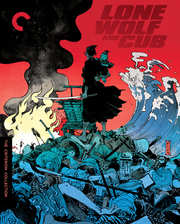








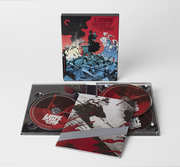
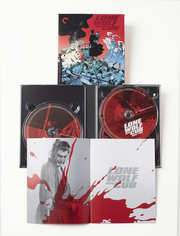
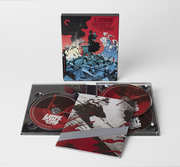
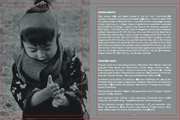
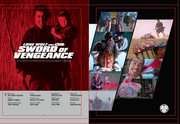

































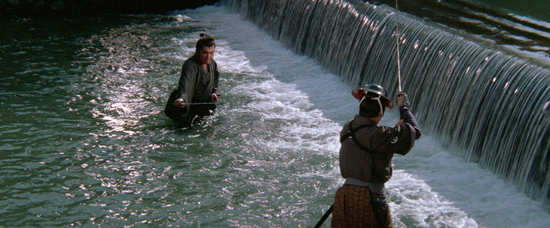
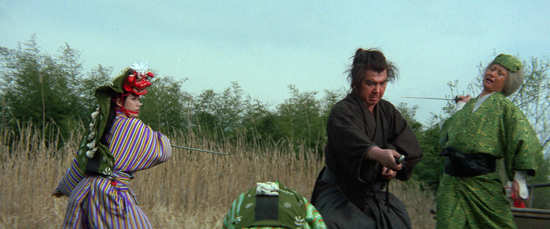

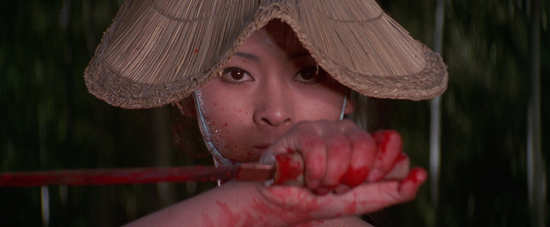
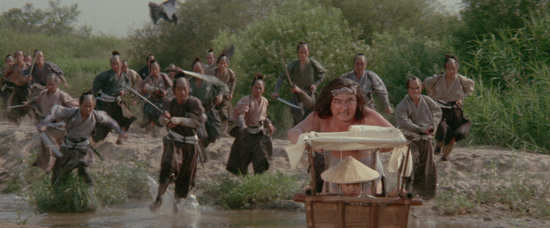
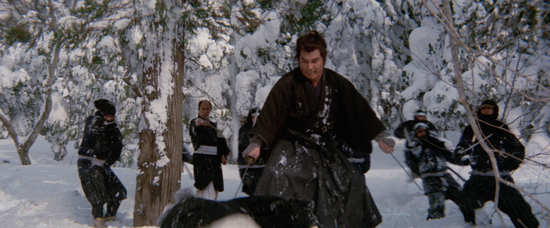


Your Opinions and Comments
Cheers, something else to put on my ever expanding Amazon wish list :)